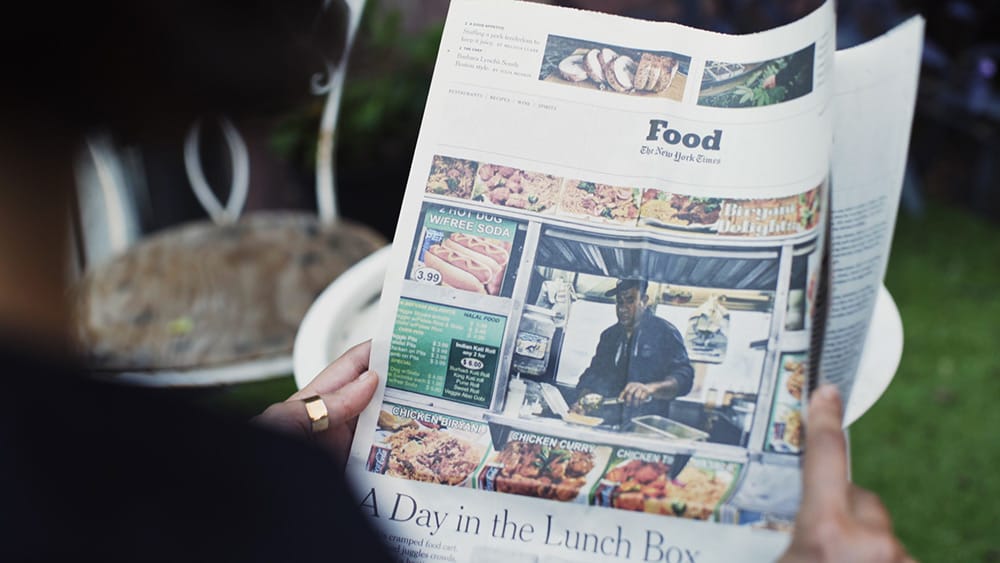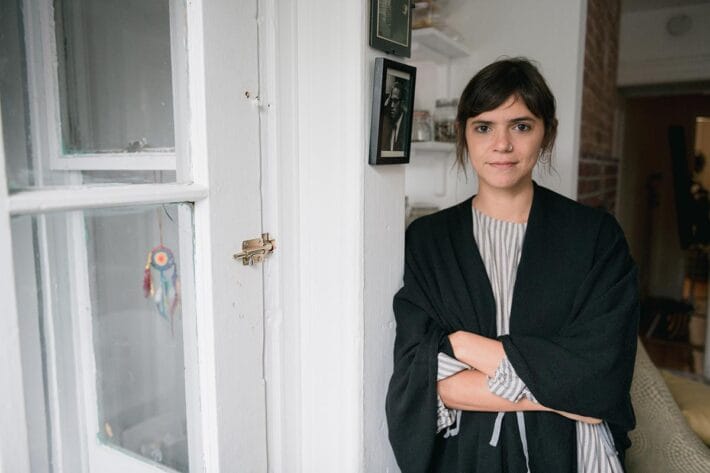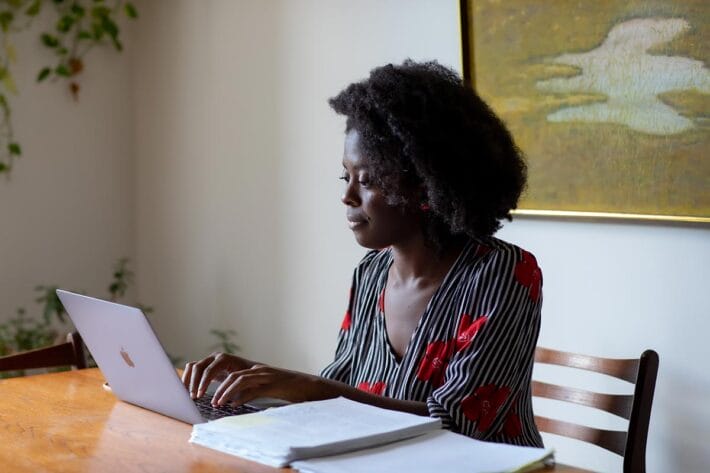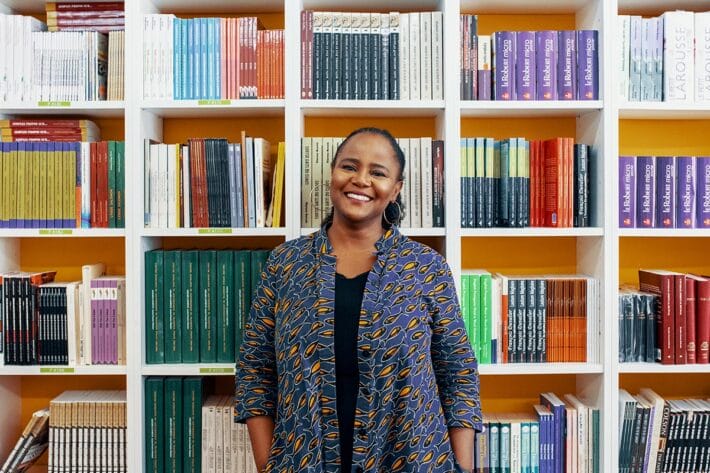Through food critic Tejal Rao, what is often invisible to others is seen with fresh eyes. As a reporter for the New York Times, the Creative Promise Prizewinner spent a day on her feet observing the owner of one of New York’s halal food carts, and rode the streets in a Mister Softee truck to learn the secrets to creating perfect soft serve.
Tejal credits her inquisitiveness to her immigrant background. Born in London to immigrants from Kenya and India, Tejal lived in Kuwait, Sudan, England, and France before moving to Atlanta, Georgia, where she attended high school. “I’m really comfortable with being a little bit of an outsider in new communities,” she says.

The family’s moves took them to several different continents, but food remained a constant throughout Tejal’s childhood. It allowed for connection, between family and strangers alike. Both of Tejal’s parents loved to cook and did so often; it was an expression of love and care.
It was also a way to meet new people: When the family moved to places where they knew no one and didn’t speak the language, neighbors would be invited over for home-cooked meals; words weren’t necessary to enjoy those. “That’s how we tricked people into being our friends,” Tejal jokes.
Later, after college, food also became a means of livelihood for Tejal. She had studied literature for her bachelor’s degree at Emerson College, with the intention of pursuing a career in publishing, but found the job market difficult to break into after graduation. She supported herself as a line cook instead, working in a number of restaurants.

After a few years, Tejal decided to give writing a try, but the job market was unforgiving. “My experience was in scaling fish and laminating dough, so publications weren’t that eager to assign me stories or even pay me,” Tejal says.
She managed, however, to use her experience to her advantage by freelancing for a new food blog started by The Atlantic. Tejal moved to New York City and parlayed this foothold into more assignments for publications like Edible Brooklyn, Edible Manhattan, Gourmet.com, and Time Out New York. On the side, she hustled with other gigs, like copyediting and translation, and she ran a supper club in her apartment, with menus that ranged from oxtail soup to panipuri to fried chicken.
After four years of freelancing, Tejal landed her first full-time writing position as a restaurant critic for The Village Voice in 2012. There, she sharpened her skills, learning to write a weekly column that met high editorial standards at a fast pace. From The Village Voice, Tejal moved on to several other publications, including Bloomberg News and Saveur, before she began working as a reporter for the food desk at the New York Times in 2016.

Along the way, Tejal’s distinct voice and concerns as a writer and thinker emerged. As her portfolio grew, her goals changed: “I wanted to find my way to more stories on the sidelines, more stories about the people whose work often goes unseen,” she says. And the more she wrote, the more she realized “that food was this vast, endless subject,” a lens through which she could explore politics, culture, history, science, and more.
One example is a story Tejal filed for the New York Times on Sean Sherman, an Oglala Lakota chef who is revitalizing the usage of indigenous ingredients and culinary techniques. While the piece incorporates mouthwatering descriptions of quick-smoked duck with dried cherries and corn cakes with bison meat braised with cedar fronds, Tejal also writes about Chef Sherman’s mission to recover an aspect of native culture that has been nearly lost to history, due to a lack of written records, the disruption of native traditions by American government policies, and the introduction of wheat flour, sugar, and dairy, government-issued commodities that have replaced many native foods on reservations.

Her thoughtful food writing has captured widespread attention. She has won, twice, the James Beard Foundation’s Craig Claiborne Award for restaurant criticism, received the James Beard Foundation’s Reporting Award, and been named to Forbes’ “30 Under 30” list of innovative entrepreneurs and professionals, among other honors.
What brings Tejal the most excitement, however, is the new crop of emerging food writers. She has not forgotten, in her rise to acclaim, how difficult it was for her to get into the field or how long she had to hustle; with that in mind, she guest lectures at college journalism classes, and workshops pitches with up-and-coming writers — and she is delighted when they succeed.
“I’m really inspired by food writers who are newer to the field, who are writing the kinds of stories that either haven’t been written before, or haven’t been written from their points of view,” she says.

When asked what sets her apart from other food writers, Tejal says “maybe nothing, except that I’ve been lucky enough to work with editors who have let me follow my curiosity.” But it is precisely that curiosity that gives Tejal’s writing its characteristic insight. It comes from a willingness to listen closely, to ask instead of to assume, and to give every story the space it needs to unfold.
For, as someone was once an outsider, Tejal knows that time and interest are a form of kindness: “As an immigrant to the U.S., the daughter of immigrants to Europe, and the granddaughter of immigrants to East Africa, I’ve always felt connected to people who have been displaced,” she says. “And the thing I know because of it is that everyone deserves to be at the center of their own story.”
Related News
Valeria Luiselli: “I Am Always Moving Between Genres, Identities, and Linguistic Communities”

Yaa Gyasi: History is an Ongoing Story

Edwidge Danticat: Storytelling as a tool for advocacy

You may also be interested in
Yaa Gyasi

Valeria Luiselli

Tejal Rao
